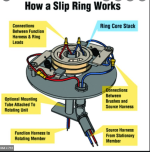problemaddict
100 mW
I just happened across this little tidbit. Maybe I'm late to the game, but it's the first I've heard of it:
https://interestingengineering.com/bmws-fifth-generation-electric-motor-is-a-magnet-free-masterpiece
The latest BMW motors are using a brushed AC motor setup.
I'm no motor expert, so I'm wondering if these could possibly be easier to hack once they start showing up in junkyards...
https://interestingengineering.com/bmws-fifth-generation-electric-motor-is-a-magnet-free-masterpiece
The latest BMW motors are using a brushed AC motor setup.
I'm no motor expert, so I'm wondering if these could possibly be easier to hack once they start showing up in junkyards...



